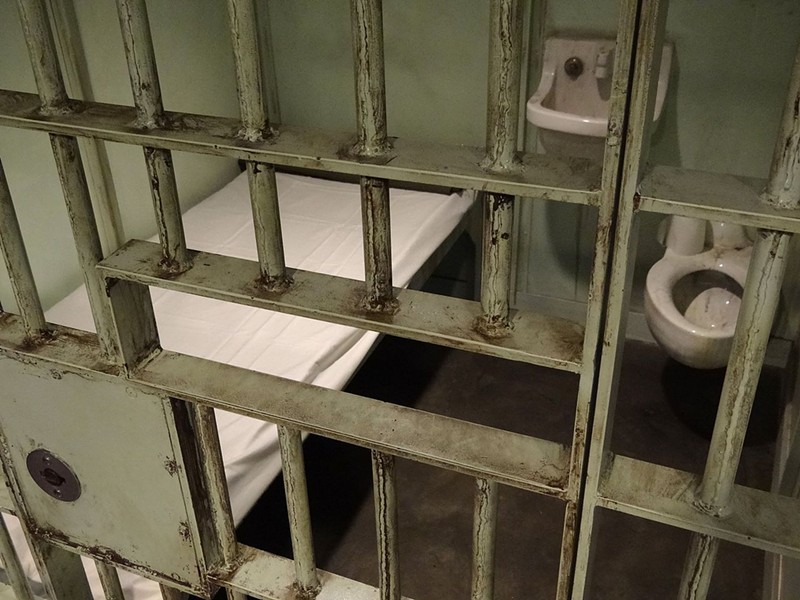Now, Toombs' case is the subject of a wrongful death suit brought by his family against the county. The suit also names Southern Health Partners Inc., which is tasked with providing medical services for the jail.
Dean Malone, the attorney representing the family in the suit, said he’s dealt with cases of jail suicides before. “If you have a person on suicide watch, you cannot put him or her into a cell with things that he or she can make a ligature out of,” Malone said. "We’ve commonly seen detainees use their own jail clothing or bedding, sheets, blankets, pillowcases, things like phone cords, just anything that’s available, they will use it.”
Malone also represents a man who was recently awarded $100,000 after Dallas County held him in jail for nearly two months longer than he was supposed to be there.
Toombs was arrested in April 2022 at his home as a result of a call reporting that he was attempting to harm himself. The arresting officer took Toombs in for medical treatment and eventually transported him to the Kaufman County jail. He was treated for a cut on his arm, which was wrapped in a long, strong piece of medical gauze.
“It was clear during booking that Mr. Toombs would attempt to kill himself through any available means,” the lawsuit noted.
Booking documents were completed for Toombs when he was transferred to the county jail. One of those documents screens for suicide, as well as medical, mental or developmental impairments. The suit claims the documentation showed Toombs had clear intent to kill himself if provided the means while in jail.
The document also showed that Toombs was feeling hopeless, hearing voices telling him to kill himself and that he had attempted suicide in the past. As also detailed in the paperwork, he had previously been diagnosed with PTSD, bipolar disorder, anxiety, depression and schizophrenia.“It was clear during booking that Mr. Toombs would attempt to kill himself through any available means." – lawsuit
tweet this
“There was just no dispute at all that he was suicidal,” Malone said.
The jail would also learn that Toombs had previously received mental health treatment from the North Texas Behavioral Health Authority, and that he was prescribed medication for mental health issues and depression.
Toombs was put into what the jail called a "suicide watch cell" and dressed in a "suicide-resistant gown," with medical gauze wrapped around his arm. “Predictably, between cell checks, a short time after booking, Mr. Toombs tied the ready ligature around a handrail near the toilet in his cell and tied the other end around his neck,” the lawsuit reads. “He thus died by suicide.”
A jailer eventually noticed what Toombs had done, removed the gauze from his neck, performed CPR and contacted EMS. Toombs died just hours after entering the jail. No charges had been filed against him.
As required by law, the Kaufman County Sheriff’s Department filed a custodial death report with the attorney general’s office. The report acknowledged that Toombs made suicidal statements and exhibited both mental and physical health problems. It also said that Toombs was cooperative with the officers he interacted with.
“There was thus no issue dealing with Mr. Toombs in the manner that was necessary to protect him from his clear and unabashed active suicidal ideation,” according to the suit.
Kaufman County submitted a legally required form about the death to the Texas Commission on Jail Standards. The form indicated that Toombs death was investigated by the sheriff’s office, which involved interviewing several jailers on duty at the time of the death. During one interview, a jail staffer said Toombs had been medically cleared and that medical staff allowed the gauze to stay wrapped around his arm.
“There was no doubt to all who observed the gauze that it was strong enough to be used as a ligature,” the lawsuit says. Jailers were meant to check on Toombs every 30 minutes but they couldn’t see what he was doing because he was blocked by a partition in his cell.
According to the lawsuit, a sergeant at the jail told an investigator of the death, “Everything we’ve done, I know my officers, we did everything that we could, everything that we were shown to do and we tried everything we could …”
The suit references statistics from the U.S. Department of Justice showing that suicides were the leading cause of jail deaths between 2000 and 2019, totaling 6,217 nationwide.
An inspection of the jail after the suicide found that the duration for suicide training was not specified and that some jailers weren’t completing the forms relating to suicide and medical, mental and developmental impairments. The inspector gave the jail 30 days to take corrective measures on these issues.
Malone said the lawsuit is still in the early stages but the family is hoping it will help them get some closure about Toombs’ death and ensure this doesn’t happen again.
“Hopefully, they can keep this from happening to other people.”
Neither Southern Health Partners nor representatives of the Kaufman County jail responded to our request for comment.













